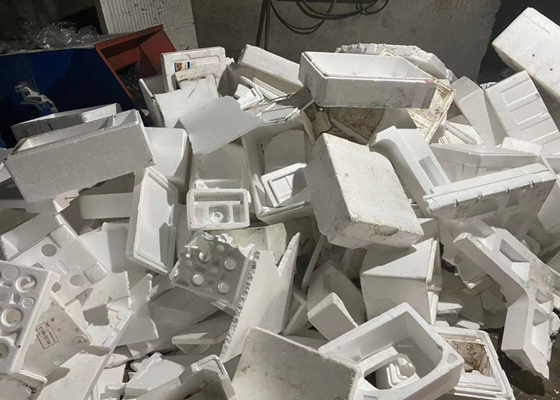Waste plastics including EPS foam are being recycled, but the recycling data is still unsatisfactory. It cannot be ruled out that some plastic recycling activities have not been implemented efficiently. Currently, although many single-use plastics are marked as recyclable, only 9% of plastic is recycled. The remaining 91% ends up scattered across the ocean and land. Waste Plastic pollution is still very common, waste plastic bottles, foam particles, plastic bags, agricultural film, etc.
Currently, an enormous swirling mass of trash called the Eastern Garbage Patch floats between the coast of California and Hawaii. It is a dizzyingly vast mess of garbage and plastic items。

We can’t pinpoint the source of waste plastic in this vortex, which along with Japan’s east coast forms the Great Pacific Garbage Patch, commonly known as the Garbage Gyre or Garbage Vortex, and unfortunately experts say it will continue to grow. This proves that recycling waste plastic is a global task. But the prejudice against waste EPS foam makes this material the least recycled category of wastee plastics. However, in the experiment on the source of microplastics, people were surprised to find that the second source of microplastics turned out to be this waste EPS foam, which is often overlooked! Therefore, EPS foam recycling should be one of the main parts of recycling waste plastics.

The effective recycling of EPS foam is inseparable from the strong support of related industries. There have been similar recycling cases before. Supermarkets help to recycle EPS foam packaging produced by residents, and shopping mall staff who help deliver furniture help collect EPS foam packaging, catering Industry helps recycle EPS food packaging and more. On the one hand, these waste EPS foams are indeed by-products of these industries. On the other hand, these industries have relatively strong financial resources and are able to help society realize EPS foam recycling. The latest California law requires people in related industries to help recycle waste plastic, which also includes monetary assistance. Starting in 2027, plastic manufacturers will have to pay $500 million a year for 10 years to help reduce clean plastic pollution. So what steps do you need financial support for when EPS foam recycling is carried out?

First of all, it is most necessary to invest in an EPS foam densifier, because the outstanding features of EPS are light weight and large volume. Therefore, it must be compressed first before it can be recycled smoothly. After the EPS foam densifier is broken, heated and extruded, the EPS becomes 1/90 of the original volume. This is also the best way to recycle EPS foam at present. If you are interested in EPS foam densifier, or have recycling needs (any kind of foam), you can contact us at any time, and we will help you develop a plan for free.